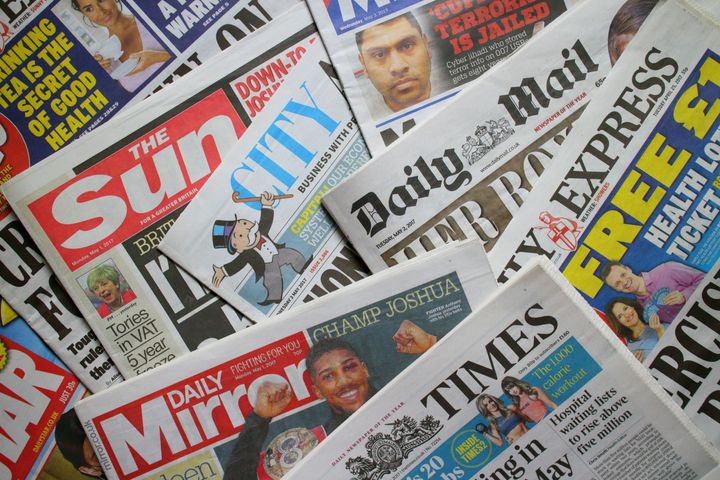
In an ever-changing world of near-instant communication, technological tsunamis and the provision of easy and digestible online content, traditional newspapers are facing challenges at every turn.
The reach for newspapers has never been higher, but most of this growth is being driven by online mediums. Offering a wider readership and more targeted and effective advertising methods, digital outlets provide an unrivalled source of income for newspapers. The FT recorded its highest ever circulation in 2016 but three quarters of the total paying audience was derived from digital subscribers.
With the Independent embracing a digital-only future, the end of the Wall Street Journal’s European print edition and the relaunch of the Guardian and Observer as tabloids, it is clear that papers are bending with the times in a bid for financial survival.
But at what cost to the publishing world?
During my time in the Editor’s seat in my former thirty-year journalist career, I witnessed the industry’s endless twists and turns first hand. I have seen incarnations in the style and set up of papers, changes in printing practices, the influx of tabloids in the 1960s and the rise of celebrity magazines such as Hello!, where I became Editor in Chief.
The unwinding shift in media consumption certainly never ends, never finds a steady state, but even I cannot deny that the digital world represents a new and marked test for newspapers.
By nature, informative journalism is designed to produce stories that broaden horizons, promote changes to public perceptions and truly enrich society. How are these standards to be maintained if online articles are judged, not by their accuracy or effectiveness, but by their ability to generate advertising revenue and clicks on a page? When speed replaces investigative journalism and profitability overrides journalistic integrity, we risk producing articles that lack depth of thinking or critical value.
Certainly, fewer journalists are pursuing lengthy investigations or research projects that genuinely expose wrong doings or hold people in public office accountable for their actions. A lack of funding from newspapers and the practicality of regurgitating the bland statements of authoritative figures has resulted in ‘top-liners’ for online and political statements that do not properly address problems.
The result? Fewer scoops, fewer hard questions, weaker attributions, less topicality and a reduction in the ‘critical and rational press’ so plainly defined by philosopher Jurgwn Habermas.
The future of print then, is in the hands of those who want an authentic experience and a depth of learning.
The standard of digital journalism is rising - and will continue to rise - but the best exposes and the most truthful writing still comes from the traditional journalist who is properly resourced, properly trained and properly researched.
It is this journalist that has the power to control the media narrative.
Turn on BBC Breakfast or Sky Sunrise and you will find a ‘lively and informed conversation about today’s [printed] headlines’. The BBC is the world’s oldest national broadcasting organisation and it still follows the agenda of printed papers.
A consumer may not be physically holding a copy of the Guardian or the Daily Mirror in their hand but the news they are consuming - whether from online or broadcast – will have been set by what the newspapers are covering.
A lengthy feature produced by the Sun, the Daily Mail or the Daily Mirror will always generate more engagement and a bigger response than the Sun Online, Mail Online or Mirror Online. Digital readers tend only to scan relevant headlines, whilst newspapers endeavour to introduce and engage readers in new subjects through the simple act of turning the page.
Print offer quality and depth of interaction whilst digital prioritises quantity and click per pages. They have different USPs, a different focus and a different intention – and if there’s a war to be waged between the two then the battle lines are shaky at best.
Any real competition to be had is between news outlets with the same readership.
As John Witherow, Editor of The Times put it, “the measure is still ‘can you exceed them in print?’, because there is nothing more damaging than a rival paper offering a better reader experience in the same sphere.
With The Times finally overtaking The Telegraph’s print circulation in a ‘watershed moment’ in Britain’s newspaper wars, it is clear where the priorities for printed papers lie.
Competition can be found from every angle and the need for properly trained and well-respected industry acclaimed journalists is certainly greater than ever. Though however produced, however delivered, the world needs perceptions, reflections and truths. The world needs journalism and it needs newspapers. And the printed word isn’t dead yet.
Founder and Chairman of PHA Media, Phil rose to be Editor of the biggest selling newspaper, News of the World, for five years before taking up the reigns as Editor-in-chief of the world’s most well-known celebrity magazine, Hello!. He later became Editorial Director of development for Trinity Mirror, Europe’s largest newspaper publishing group.
